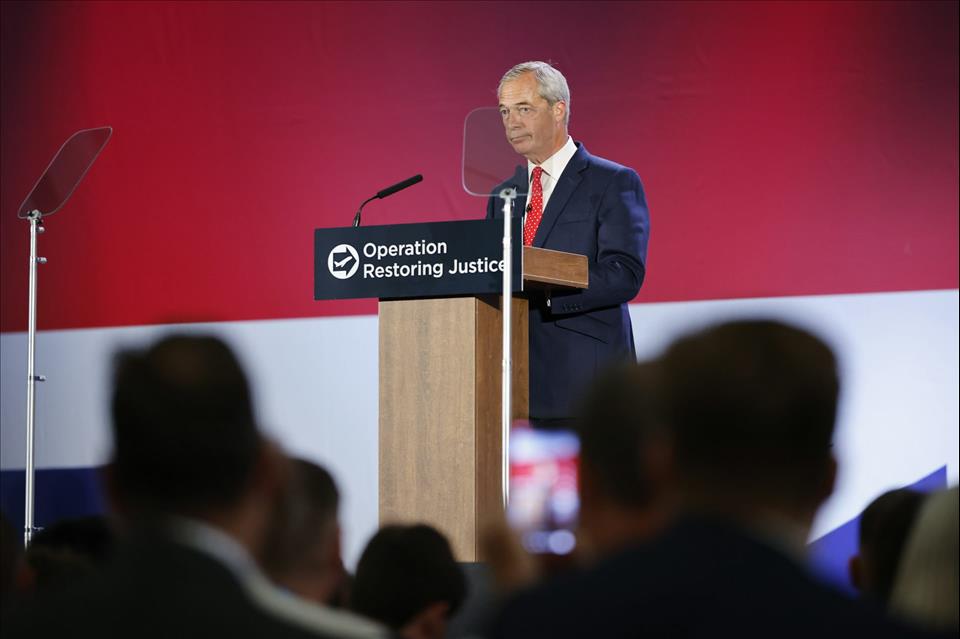
The Most Radical Part Of Reform's Deportation Plans
There are many elements to the policy, but fundamentally it is a decision to abandon the UK's decades-long commitment not to send people to places where they may face torture or death.
At the heart of the global asylum system is one basic principle: countries must not send people to places where they face serious threats to their life or freedom. This rule – known as the principle of“non-refoulement” – derives from the 1951 Refugee Convention but also appears in other human rights laws and agreements. It is why European countries, including the UK, assess asylum claims even when people have arrived without authorisation.
“Look, I can't be responsible for despotic regimes all over the world,” said Farage, defending the policy in The Times, adding that his responsibility is to the“safety of women and girls on our streets” rather than to those who have entered the UK without permission.
The UK was instrumental in drafting both the European Convention on Human Rights and the 1951 Refugee Convention . For the UK to effectively remove itself from these treaties raises significant questions about whether other states would follow suit, and what sort of protections would exist for persecuted people around the world in the future.
What is Reform proposing?The plan is indeed, as Farage described, radical. Its main aim is to“detain and deport all illegal migrants” over one parliament. To make this possible, the plan, branded Operation Restoring Justice , entails leaving the European Convention on Human Rights (ECHR), repealing the UK's Human Rights Act, and“disapplying” for five years the Refugee Convention and other international agreements that could prevent deportations.
Further, it would greatly expand detention on repurposed military sites, and scale up charter flights for the removal of“up to 600,000” people without the right to be in the UK.
The policy reflects a major departure from the 75-year postwar consensus in Europe that countries should not send people to countries where they could face persecution.
Legal and practical hurdlesReform's policy, if implemented, is likely to attract legal challenges. However, as the parliamentary battle over the last government's Rwanda deportation plan demonstrated , the government has considerable power to prevent the courts from having their say. Leaving the ECHR, repealing the Human Rights Act and removing all references to non-refoulement in domestic law would make the policy possible, from a legal perspective.
This would not happen overnight. It could take more than a year for Reform's illegal migration (mass deportation) bill to become law, given that Reform will command no majority in the House of Lords, where the policy is liable to attract strong resistance. Leaving the ECHR requires just six months' notice – but would probably also require the consent of parliament .
The bigger practical hurdles are logistical and diplomatic. Reform proposes to increase detention spaces to 24,000 within 18 months. As of mid-2024, the most recent available data, detention capacity stood at an estimated 2,200 .
The UK's current system for removals operates at a fraction of the scale Reform envisages. In the year ending June 30 2025, there were around 9,000 enforced returns and 27,000 voluntary ones. Removing hundreds of thousands of people over five years would require a huge expansion of interior immigration enforcement. It also remains unclear how Reform would identify hundreds of thousands of people living in the UK without permission.
Consent from receiving countries (the countries to where people would be deported) is a longstanding barrier to deportations. If a country does not recognise their citizens or refuses to take them back, they cannot be returned .
The government's recent experience shows documentation and country cooperation are the main practical limits on enforced returns. Questions remain over whether, or on what terms , Afghanistan and Iran would agree to take back their citizens.
Reform has anticipated this potential issue by proposing to pay countries to take back their citizens, or impose sanctions on those that don't.
Should this not work, Reform's Plan B would be to deport people to“safe third countries”, a la Rwanda. Plan C: sending people to British Overseas Territories like Ascension Island, something the previous Conservative government was reported to have looked at internally and rejected on feasibility and cost grounds.
Reform's proposals include several deportation flights a day. Tolga Akmen/EPA-EFE
Reform estimates that the policy would save over £7 billion in five years. In truth, the policy is so radical that it is impossible to cost with any degree of precision.
What is clearer is that any net saving would depend critically on how many people the policy deters from crossing in small boats. Currently, small boat arrivals and a large asylum backlog generate annual government spending of over £4 billion .
Managing the asylum system has become increasingly challenging over the last decade, as numbers of both unauthorised arrivals and asylum claims have risen rapidly, and the cost of the asylum system has skyrocketed.
However, the most significant part of Reform's announcement is not the detail, but the essence. It proposes ending the principle of refugee protection – accepting that people would be sent to countries where they could be tortured or killed, as a means of reducing unauthorised migration and cutting the costs of the asylum system.

Legal Disclaimer:
MENAFN provides the
information “as is” without warranty of any kind. We do not accept
any responsibility or liability for the accuracy, content, images,
videos, licenses, completeness, legality, or reliability of the information
contained in this article. If you have any complaints or copyright
issues related to this article, kindly contact the provider above.


















Comments
No comment